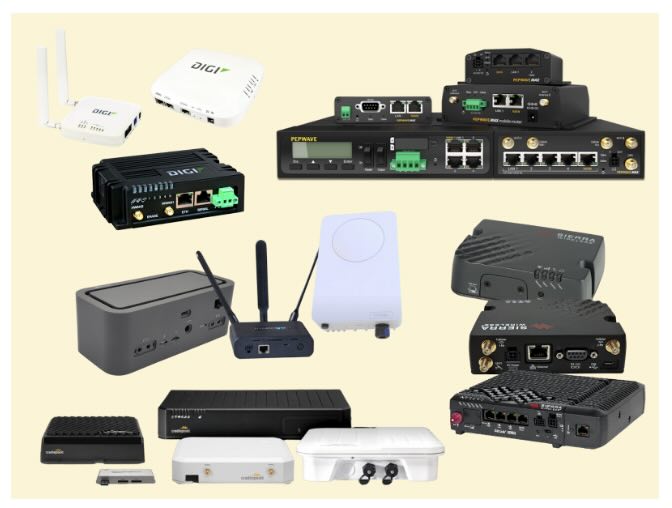



You may have heard the term “Cat” before when it comes to Ethernet cables (e.g. Cat 5, Cat 6), but what about when someone is talking about cellular? “Cat” refers to the category of a 4G LTE modem (5G does NOT use categories). 4G LTE (Long Term Evolution) is a cellular technology in which both voice and data service can operate.
Categories are used to define the performance specs of the LTE device. They range from 1 to 22 and differ with regards to the frequency band support as well as the upload and download speeds they are capable of running. For example, Cat 1 modems can download at up to 10 Mbps (megabits), while Cat 22 modems are going to receive download speeds of up to 4 Gbps (gigabits).
The Cat 18 modem not only supports more frequencies than lower categories, but more antennas also. These support 4x4 MiMO. Max throughput is 1200 Mbps down and 300 Mbps up so it is more than capable of handling multiple user streams simultaneously. This type of modem would be appropriate for larger businesses needing to support over 50 users, or small groups requiring high levels of download bandwidth.
|
LTE Category |
Max Download Speed |
Max Upload Speed |
|
10 Mbps |
5 Mbps |
|
|
100 Mbps |
50 Mbps |
|
|
150 Mbps |
50 Mbps |
|
|
300 Mbps |
50 Mbps |
|
|
300 Mbps |
100 Mbps |
|
|
600 Mbps |
75 Mbps |
|
|
600 Mbps |
100 Mbps |
|
|
800 Mbps |
226 Mbps |
|
|
Cat 18 |
1200 Mbps |
300 Mbps |
|
1600 Mbps |
300 Mbps |
|
|
2000 Mbps |
300 Mbps |
|
|
4000 Mbps |
450 Mbps |
LTE categories, commonly referred to as "Cat" numbers, define the capabilities of mobile broadband devices, including their maximum download and upload speeds. These categories are crucial for users to understand the performance they can expect from their devices, especially when choosing between various options available in the market.
For instance, a Cat 1 modem can achieve download speeds of up to 10 Mbps, suitable for basic applications, while a Cat 22 modem can reach speeds up to 4 Gbps, ideal for high-demand environments such as streaming or extensive data transfers. Knowing the differences helps users select devices that meet their specific connectivity needs.
Upgrading from 4G to 5G technology brings numerous advantages, including significantly faster speeds, lower latency, and the ability to connect more devices simultaneously. This transition is particularly beneficial for sectors like healthcare and transportation, where real-time data exchange is critical for operational efficiency.
For example, in healthcare, 5G enables advanced telemedicine solutions and remote patient monitoring, allowing healthcare providers to deliver timely care. Similarly, in transportation, enhanced connectivity can facilitate smarter logistics and fleet management, ensuring smoother operations and improved safety on the roads.
When selecting a router, understanding the differences between 4G and 5G routers is essential for optimizing connectivity. 5G routers are designed to leverage the latest network technology, offering superior speed and performance compared to their 4G counterparts, particularly in high-density environments.
For instance, a 5G router can support multiple devices with minimal lag, making it ideal for busy households or businesses that rely on seamless internet access. Conversely, while 4G routers may suffice for basic browsing and streaming, they may struggle with the demands of modern applications that require higher bandwidth.
Selecting the appropriate antenna is crucial for maximizing the performance of your wireless devices. Different antennas serve various purposes, such as enhancing signal strength or improving coverage in specific areas, which can significantly impact connectivity quality.
For example, a directional antenna is ideal for long-range connections, while an omnidirectional antenna provides broader coverage in urban settings. Understanding the specific requirements of your environment can help you choose the best antenna type to ensure reliable connectivity and optimal performance.
